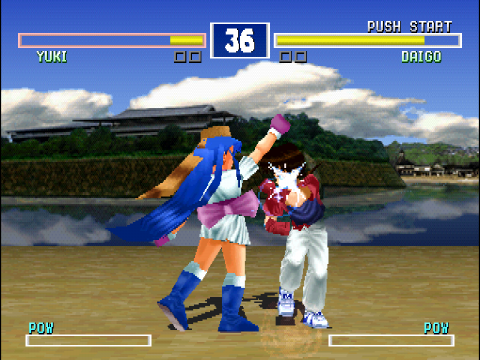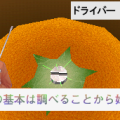Lightning Legend: Daigo no Daibouken (ライトニングレジェンド 大悟の大冒険)
Developer: Konami
Release Date: 1996
Platforms: PlayStation
This review was originally published in 32 Bit Library Volume 3: Konami’s PlayStation, which includes coverage of all of Konami’s games for the platform, as well as several import titles. Check it out!
Konami wasn’t exactly known for their fighting games, but they did publish a few 3D brawlers, including 1996’s Lightning Legend for the PS1. To contrast with the (relatively) more realistic fighters at the time, like Tekken and Battle Arena Toshinden, Lightning Legend: Daigo no Daibouken (“Daigo’s Great Adventure”) has a cutesier anime-style. Characters include the heroic boy Daigo Raioh, 12 year old girl Yuki Shirogane, caped fighter Rankerk Hatred, masked tokusatsu hero Adolf Rätsel, and enormous fluffy bunny-thing Moko Moko. The game takes place in a fictional country called Japone, which mixes elements of modern and ancient Japan into one big fantasy universe.
Also included are two catchy vocal songs sung by Yurika Nagasawa, who worked on a few other Konami properties, including some Tokimeki Memorial, Pop’n Music, and TwinBee projects. Popular voice actors also play the roles of the fighters, including Ryoutarou Okiayu, the Japanese voice of Alucard, as Rankerk. The story mode includes similar cutscenes focusing on each character’s plot, rendered using chibi sprites, making them look like a 16-bit JRPG.
The fighting action, however, is pretty standard. Despite using polygons, it plays more like a 2D fighter than a 3D one, though it lacks the snappiness of its sprite-based counterparts. It uses three buttons for light, medium, and heavy attacks, along with a fourth button to taunt. Visually, it looks decent, but it’s obviously an early PlayStation title and doesn’t hold a candle to later games. For what it’s worth, scantily clad elven fighter Misa Atago shows off some early breast jiggling physics, alongside Dead or Alive, released in arcades around the same time and hitting the Saturn about a year later. While there are only eight characters at the outset, repeated play can unlock extra items, including new levels, costumes, and characters.
Although Lightning Legend isn’t bad, it’s easy to see why Konami passed on localizing it – the Western audience probably wasn’t ready for an anime-themed fighter in 1996, and the game itself is just kind of okay. But anyone with an affinity for 90s anime and PS1 3D fighting games will find at least some enjoyment.
As far as other 3D fighters, Konami also released the similarly-colorful Battle Tryst, though as it was developed for the M2 arcade hardware, it’s all but fallen into obscurity. There’s also the kung-fu themed Fighting Bujutsu, also arcade exclusive, and Kensei: Sacred Fist, which was developed and released for the PlayStation, so at least it’s more accessible.


